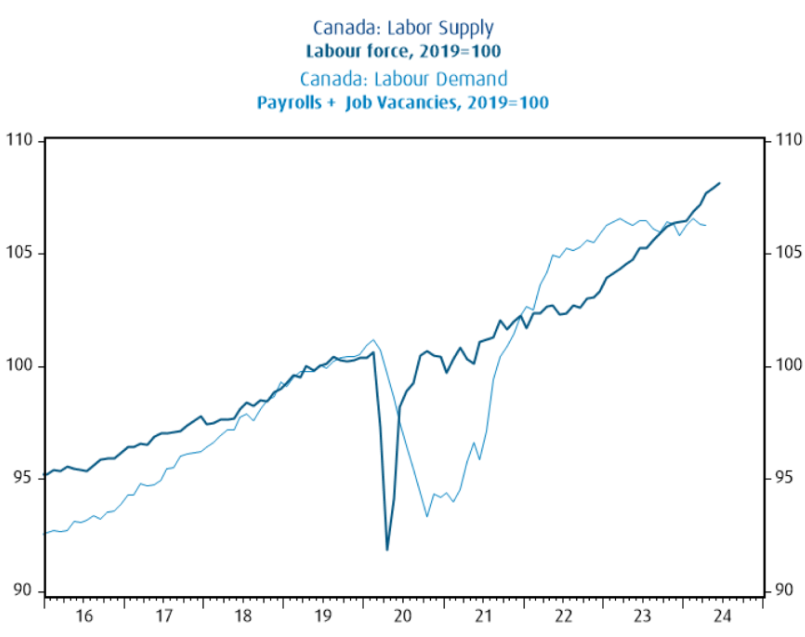
'After a few years of serious shortages and capacity constraints, we’ve tipped in the other direction'

The labour shortage in Canada is over, and it will impact the wage growth rates of Canadian workers in the future, according to a report.
After the job vacancy rate peaked at 6.0% in April 2022, it dropped to 3.4% in April 2024.
And while employers have continued to seek out talent, the population growth in the past years have left many workers unemployed, according to a report.

Source: BMO
“After a few years of serious shortages and capacity constraints, we’ve tipped in the other direction,” said Robert Kavcic, a senior economist at Bank of Montreal (BMO), in a Better Dwelling article.
The article noted that labour supply and demand were balanced going into 2020, and excess didn’t appear until 2022.
This has had an impact even on those who have advanced degrees who have had a tough time landing jobs, according to a previous report. Overall, there was little change when it comes to Canada’s employment numbers for the month of June compared to the statistics for May, according to Statistics Canada (StatCan).
Excess labour and shrinking worker demand will slow down wages in the not-so-distant future, according to the Better Dwelling report.
This is due to the fact that the annual wage growth reached 3.7% in April, well above the 2.0% target inflation rate.
“While this hasn’t found its way into slower wage growth yet, the reality is that such transmission will take time. But forward-looking indicators suggest that firms are no longer struggling with a lack of labor (some exceptions apply), and they do plan to slow the pace of wage growth,” said Kavcic in the report.
This is bad news for workers, as one-third of Canadians say they are having trouble planning for retirement, and 75% say the cost of living is negatively impacting their retirement savings, according to a Sun Life survey.
Currently, the public sector is what’s keeping wages in Canada high, according to a previous report. Now, many employers are considering automation and layoffs amid incoming mandatory increases to workers’ minimum wage, according to another survey.